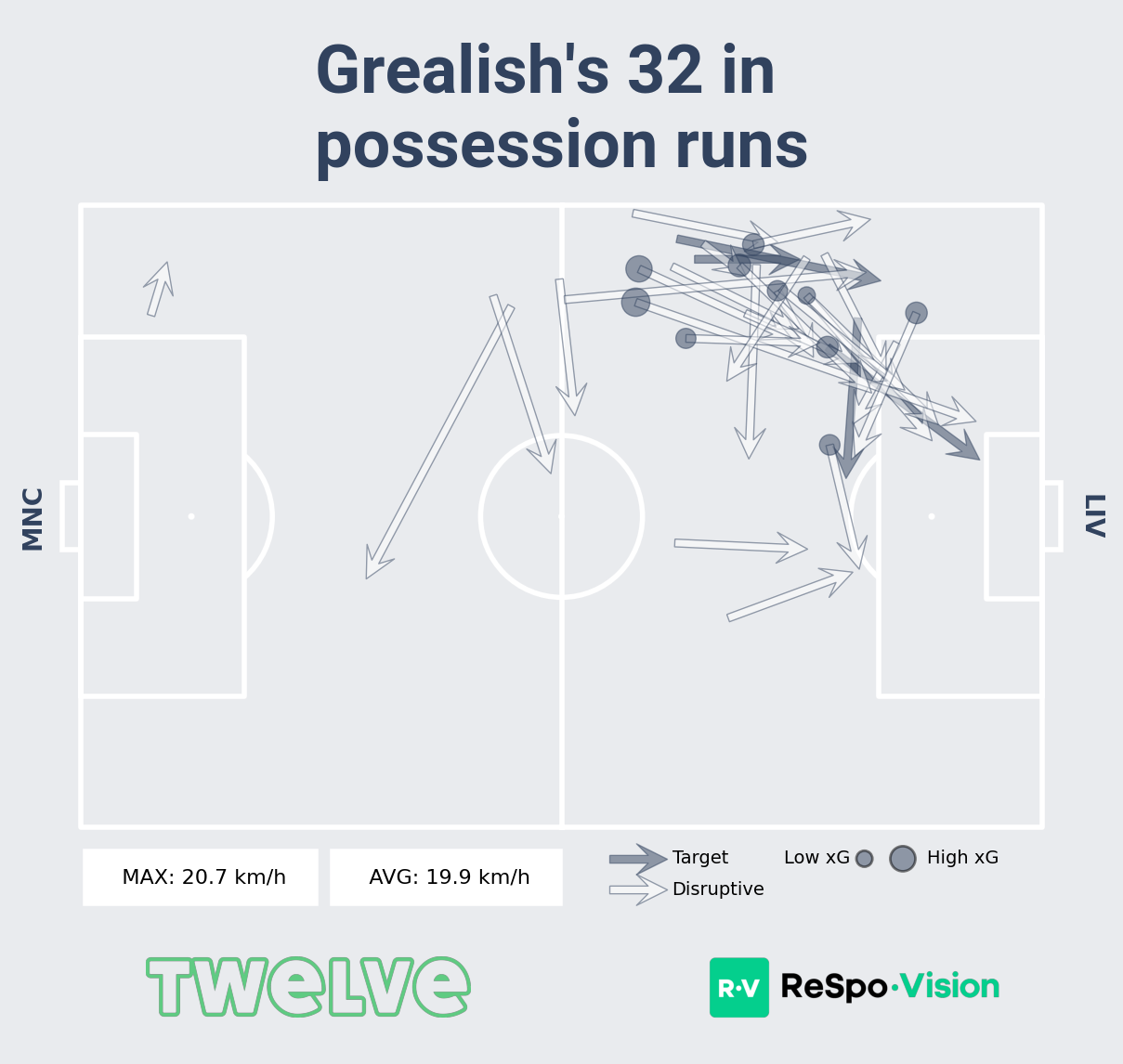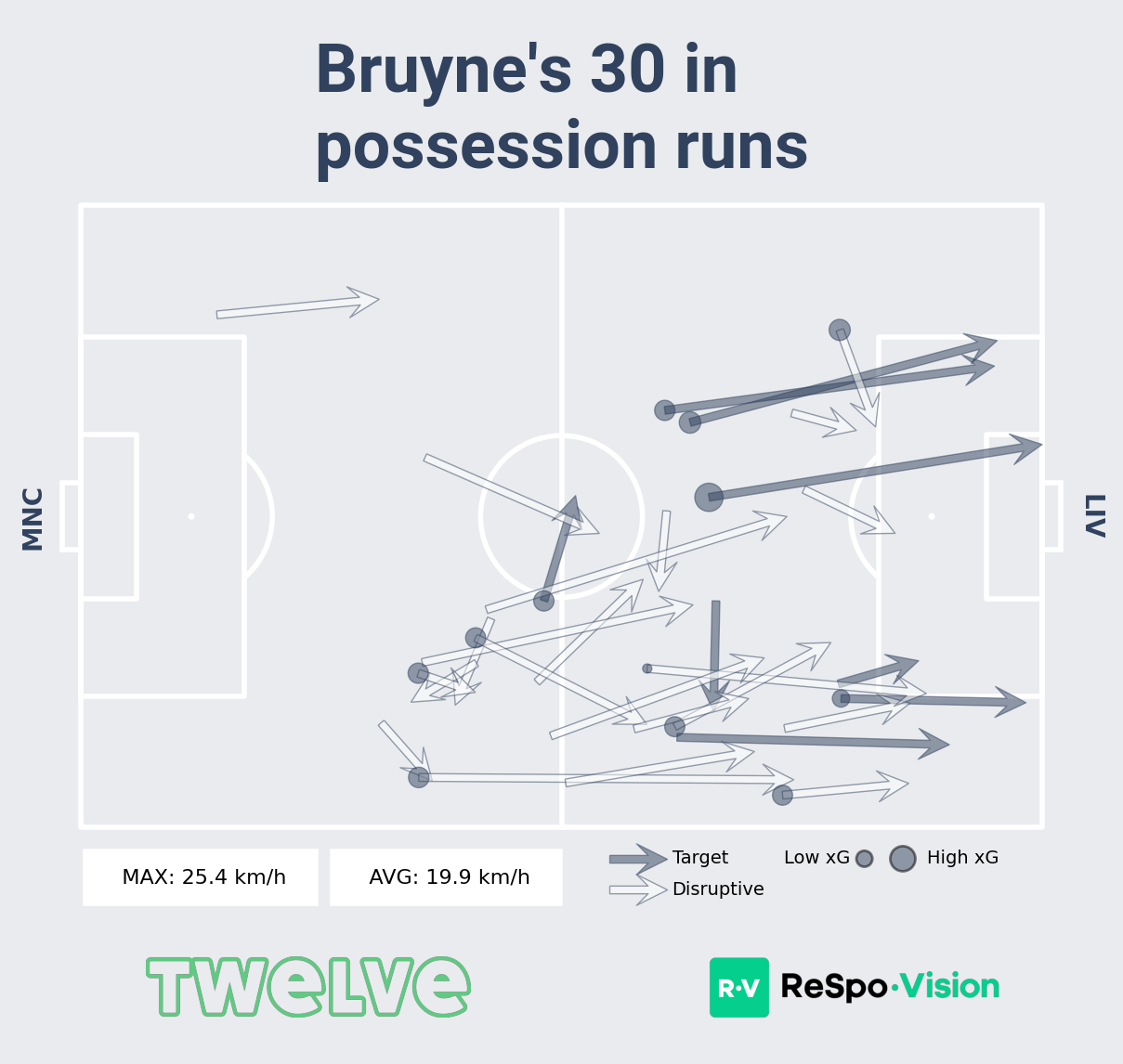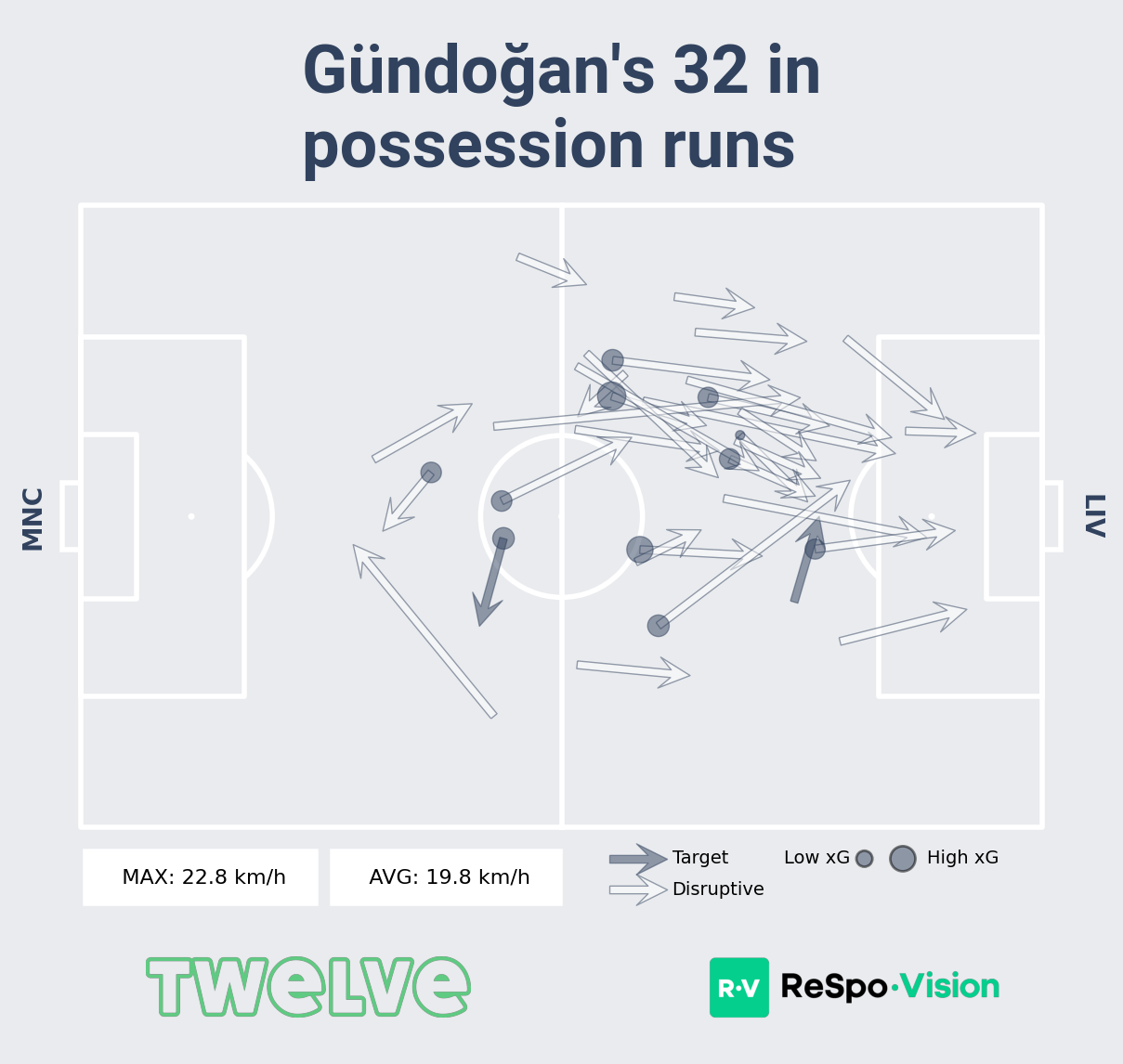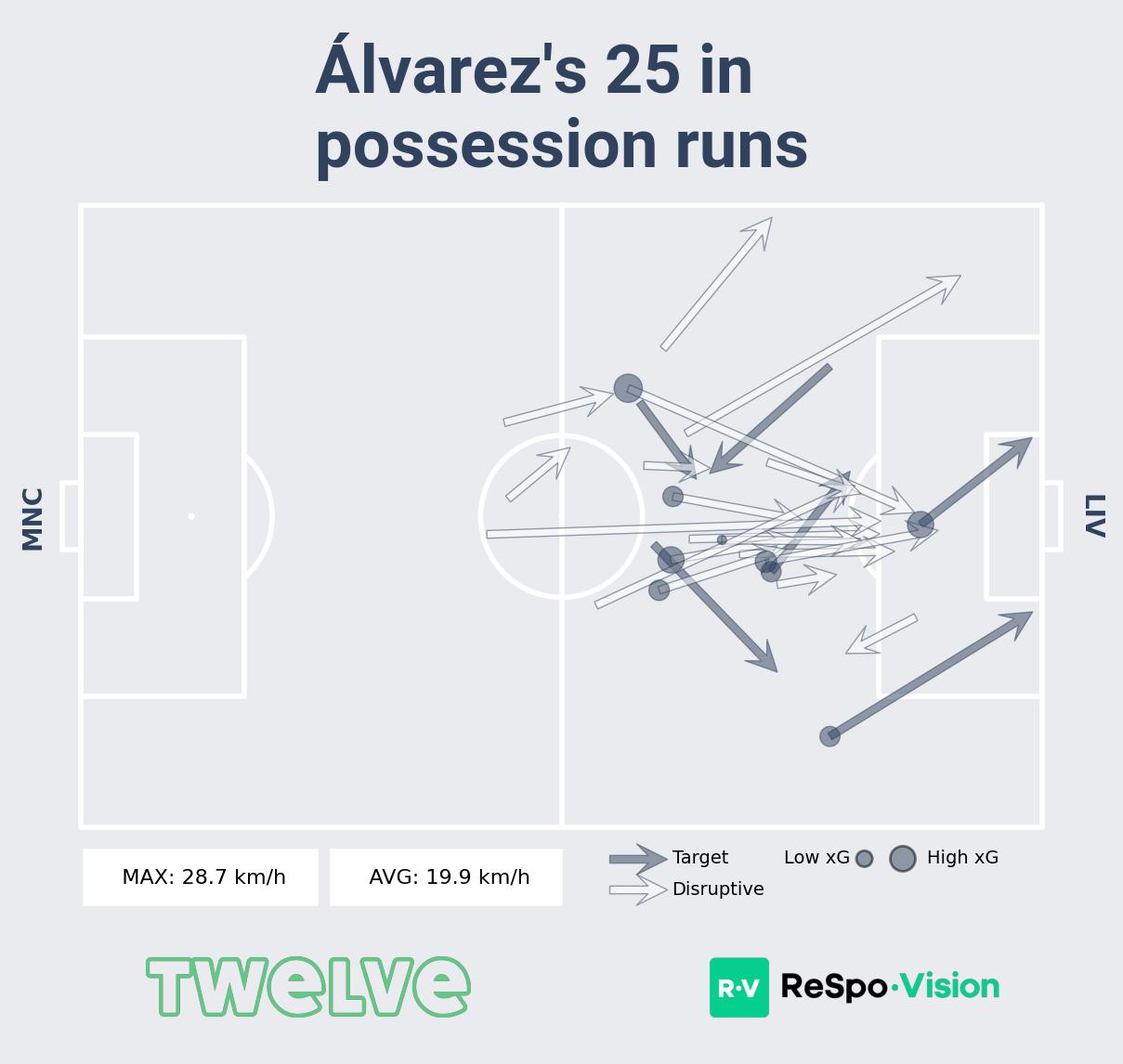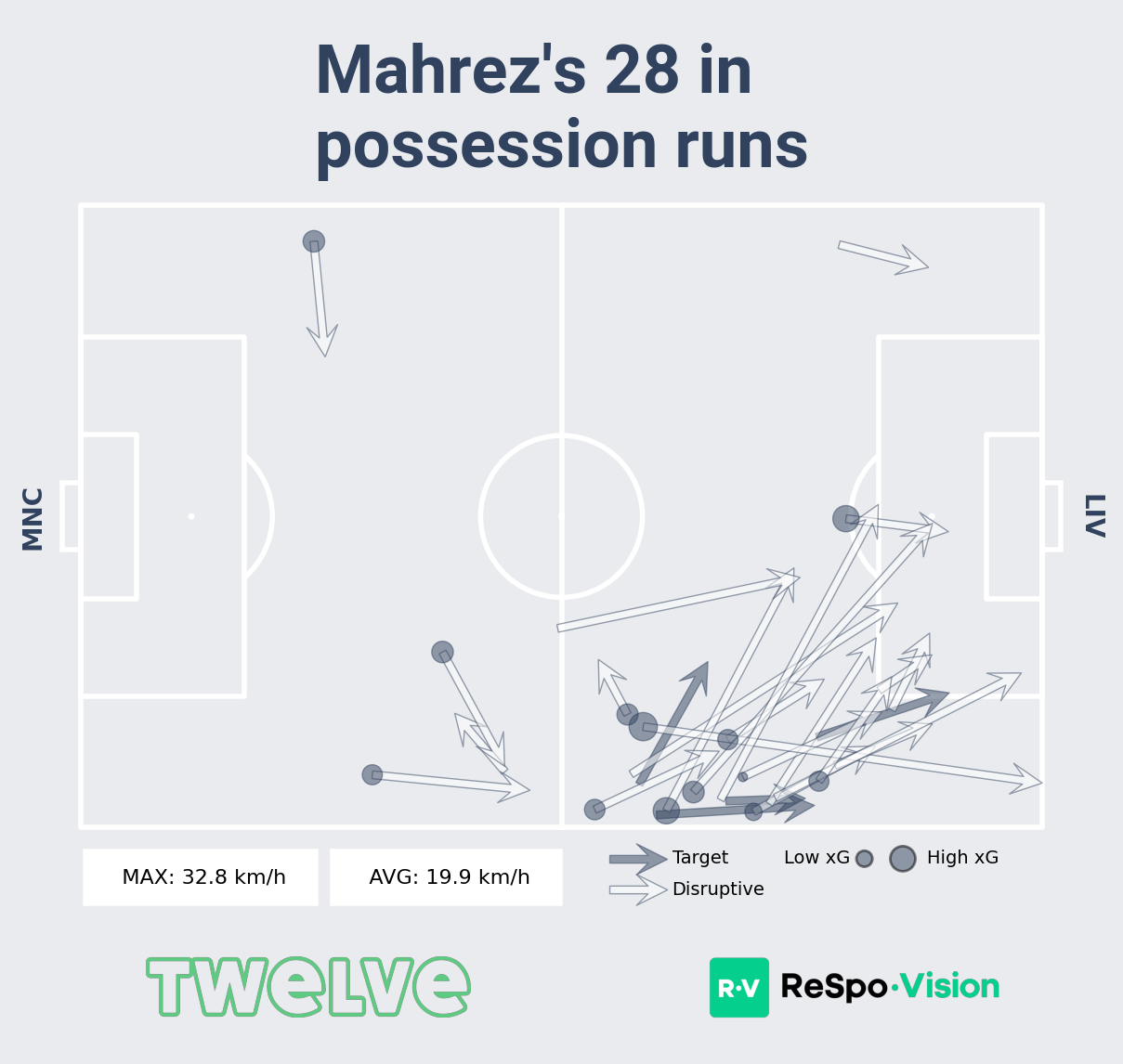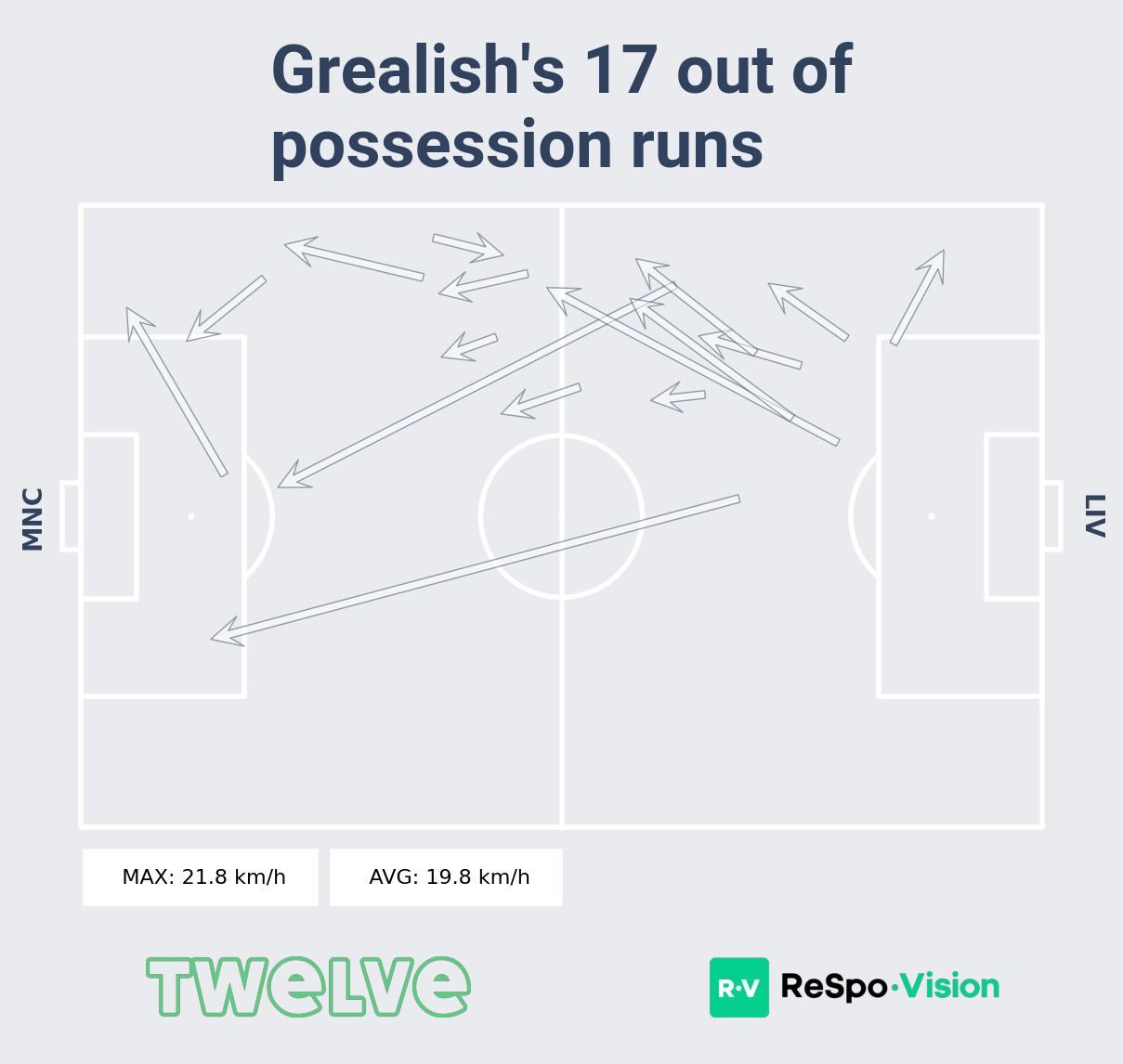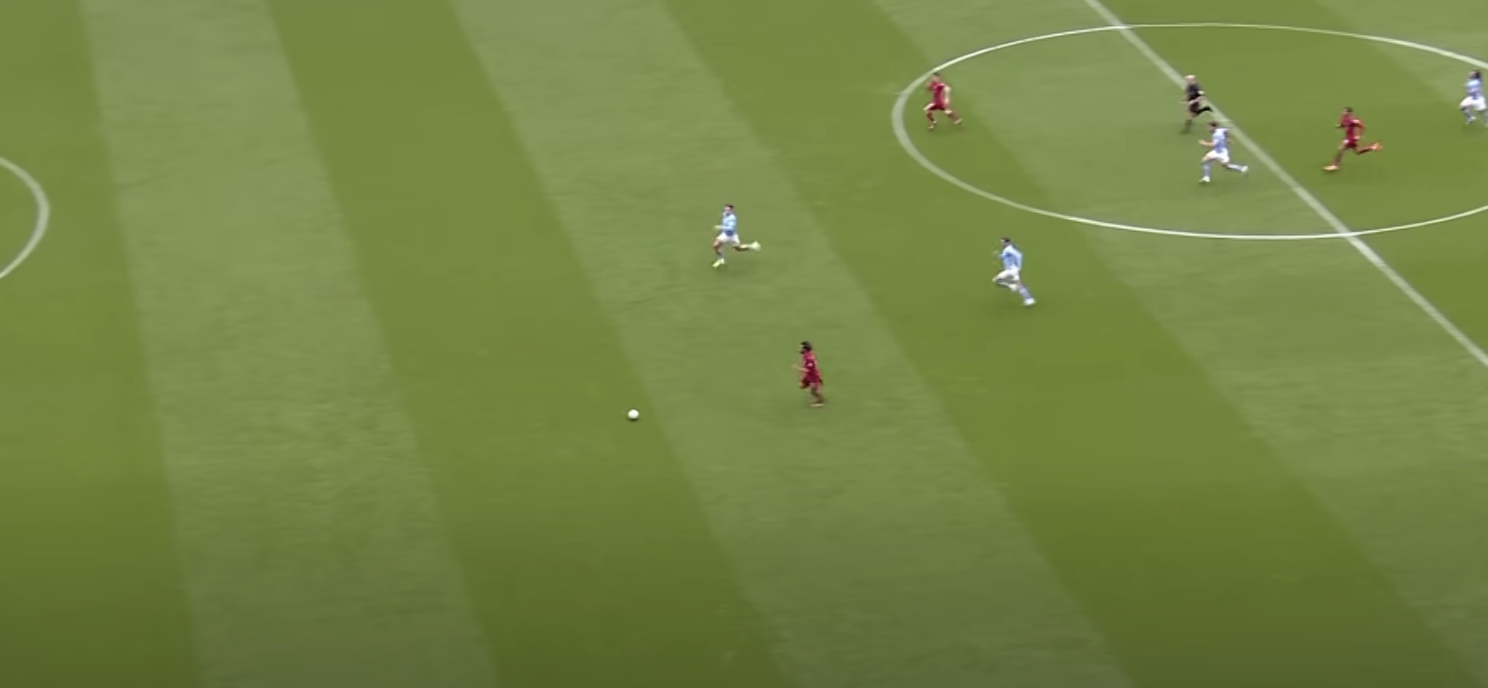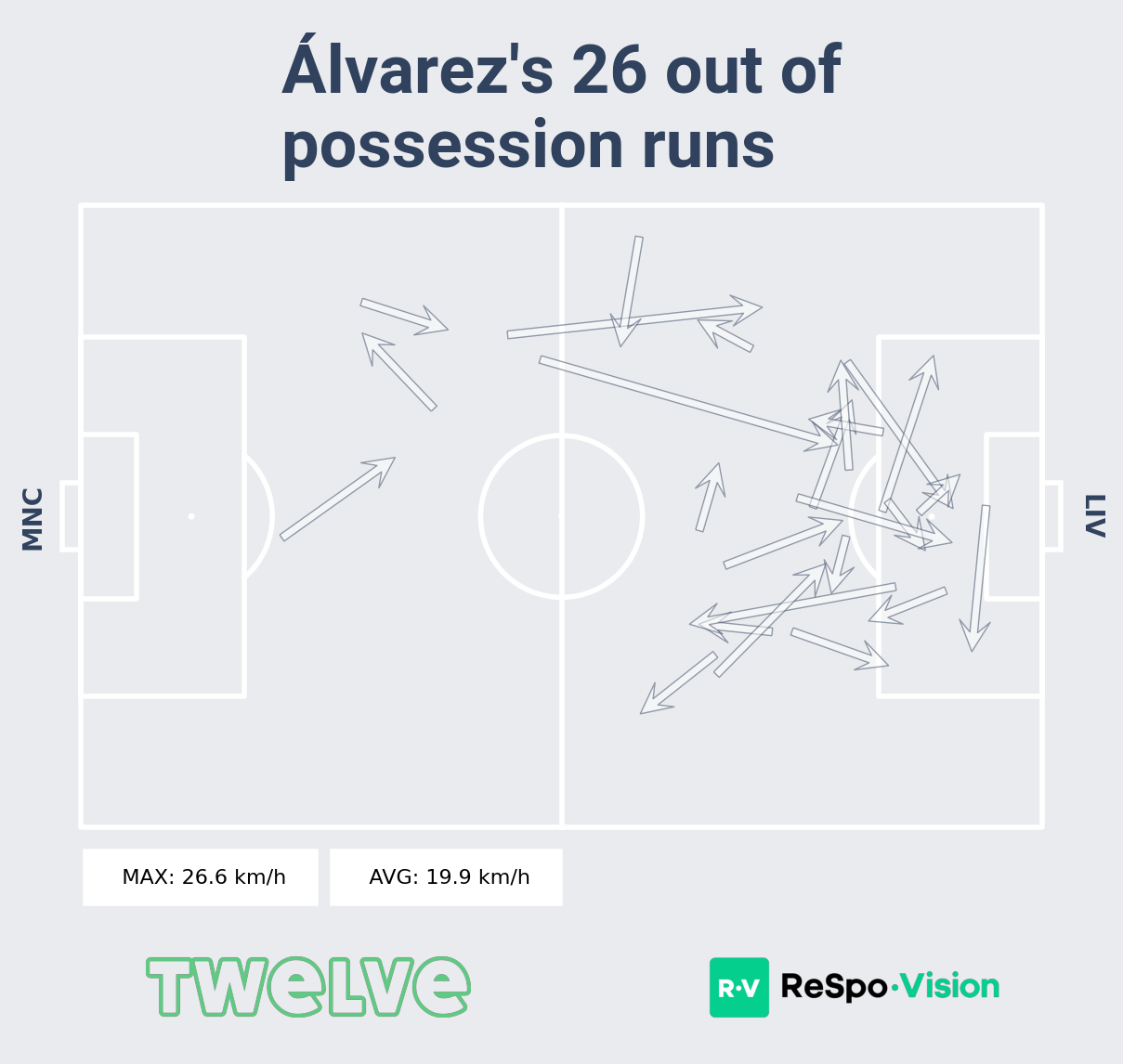Intelligent running
This post is relevant to teams looking to utilize broadcast tracking data for AI-based scouting across multiple leagues.
The advantage of broadcast tracking data over just using event data is clear: what players do on the ball is only a tiny part of how they contribute to the team. A top-level striker, for example, has the ball for only about 90 seconds during a game. Using broadcast tracking data allows us to measure their movements and actions, on and off the ball, in any match for which TV broadcast data is available.
Measuring number of runs or even top speeds alone is not enough. We want to know whether an attacking player’s runs are leading to dangerous chances for their team, even when they don’t touch the ball.
The plot below shows Jack Grealish runs during Manchester City’s 4-1 win against Liverpool.
Shaded arrows show when Grealish accelerated and received the ball. Unshaded is where he makes a run and doesn’t receive. The size of the circle indicates the expected goal value created in the possession that contained the run. 10 out of 32 of Grealish runs resulted in a high xG chance, although only one of them (an assist in the first goal saw the ball passed to him). By running off the ball he opened up space for his teammates.
Every player runs in a different way. Starting deep in midfield, De Bruyne’s run end deep inside the opposition box. He was the target of four runs deep behind the defensive lines. Gundogan’s role is simple but important: when attacks start he runs forward making sure he is central in or just outside the box. Alvarez runs are mostly central, but it is his diagonal runs where he is targeted for passes by his teammates. Mahrez runs start a long way out on the wing but quickly arrive in the box.
From a scouting perspective, the maps above show the types of runs players like to make. Moreover, linking the xG of the possession to the runs made allows us to rank how involved they are creating to chances. We use xG to measure intelligent running, not just the total number of runs. Below we rank five City players in that match.
Coaches like to use this approach to see that everyone is doing their job defensively. Liverpool fans will remember the bottom arrow in the figure below. It was Grealish run to stop Salah just before City scored.
Alvarez defensive role involves pressing and these of—the-ball runs show that he is highly involved in press.
This type of analysis is the starting point for using broadcast tracking data in scouting. We also look at passing under pressure, body positioning when receiving passes and how players create space with runs. If you want to use the most advanced data-scouting methods available then please get in contact.


